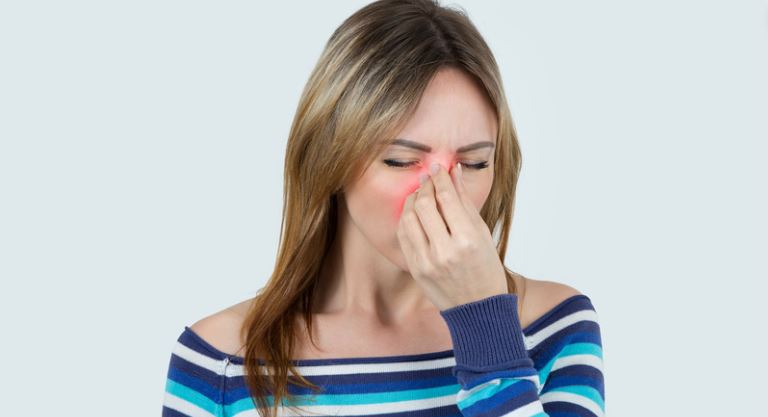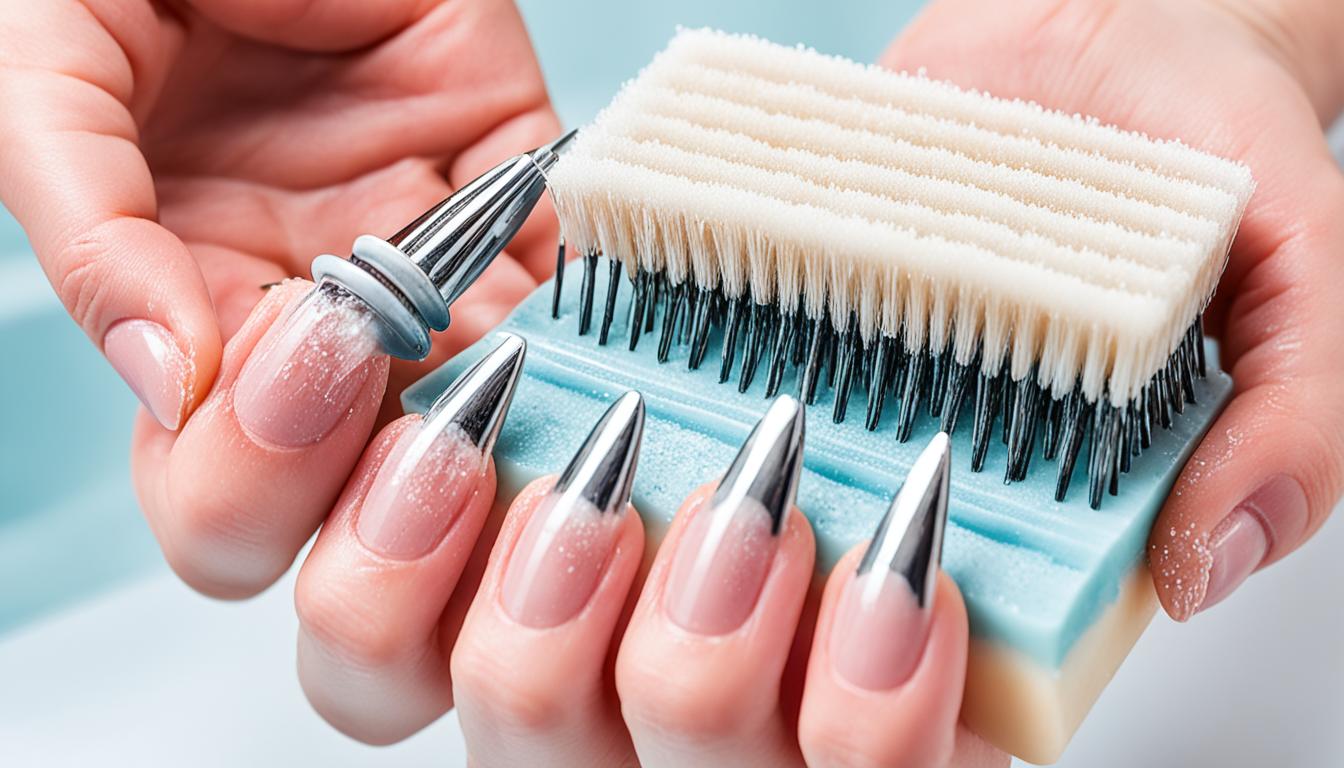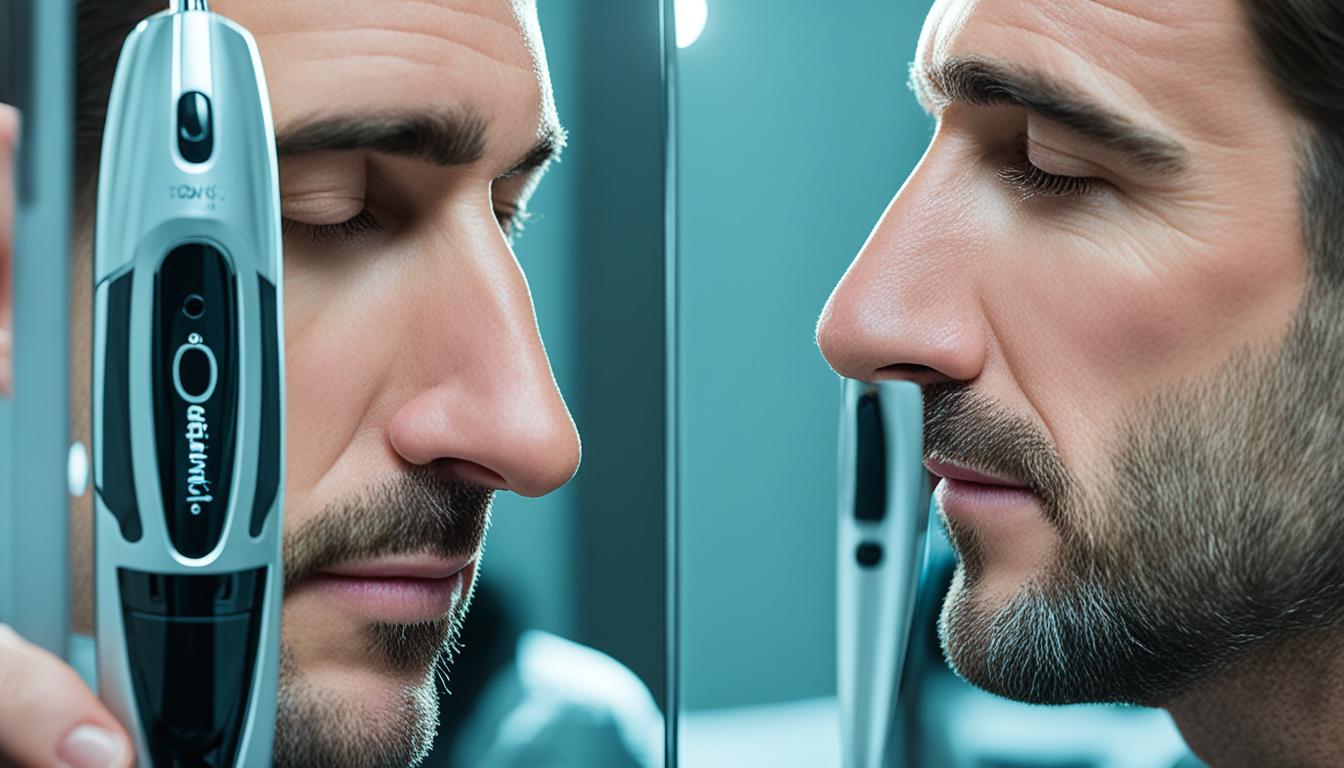When it comes to wound care, proper cleaning is essential to prevent infection and promote healing. So, how do you clean a wound effectively? Let’s explore the best practices for treating and cleaning different types of wounds.
Before we dive into the steps, it’s important to note that proper wound care varies depending on the type and severity of the wound. Whether it’s a small cut, an infected wound, or a weeping wound, following the right cleaning techniques is crucial for optimal healing.
In general, here are the key steps to effectively on how to clean a wound:
1. Wash and dry your hands thoroughly before touching the wound to avoid introducing harmful bacteria.
2. Rinse the wound under running tap water for 5 to 10 minutes. This helps flush out any dirt or debris, reducing the risk of infection.
3. Gently dab or wipe the surrounding skin with a saline solution or alcohol-free wipe to further cleanse the area.
4. Pat dry the wound using a clean towel or tissue. Avoid rubbing the wound, as this can cause irritation.
5. Finally, apply a sterile dressing or plaster to protect the wound from further contamination.
While cleaning a wound, it’s common to wonder about the use of household items like hydrogen peroxide, liquor, sodium chloride, or contact solution. However, it’s best to stick to the tried-and-tested methods mentioned above, as these household items can potentially irritate the wound and delay the healing process.
Remember, wound care doesn’t just end with cleaning. If the wound does not stop bleeding, is deep or large, has dirt or something embedded in it, is very painful, becomes red and swollen or has pus coming out, or was caused by a bite, it’s crucial to seek medical attention promptly.
The Importance of Proper Wound Care
Proper wound care is essential to prevent infection, promote faster healing, and minimize the risk of complications. By following a few simple steps, you can ensure that your wound heals effectively and reduces the chances of any further medical issues.
Raise the Affected Limb
If the wound is on an extremity, such as an arm or leg, it’s important to raise the affected limb to minimize bleeding and reduce swelling. Elevating the limb above the heart level can help control the blood flow and alleviate discomfort.
Wash and Dry Hands
Before attending to the wound, wash your hands thoroughly with soap and water. This helps prevent the introduction of bacteria or other harmful substances into the wound, reducing the risk of infection.
Rinse the Wound
Under gently running tap water, rinse the wound to remove any dirt or debris that may be present. Be sure to use cool or lukewarm water and avoid using harsh chemicals that could further irritate the wound.
Gentle Pressure to Stop Bleeding
If the wound is bleeding, apply gentle pressure with a clean cloth or sterile gauze pad to promote clotting and help stop the bleeding. It’s important not to apply excessive pressure as it could disrupt the clotting process.
Add Another Dressing
After rinsing and stopping any bleeding, carefully apply another dressing or plaster to protect the wound. Ensure the dressing is sterile and apply it with gentle pressure to keep the wound clean and prevent further contamination.
Seek Medical Attention
While most minor wounds can be effectively treated at home, certain situations require medical attention. Seek professional help if the wound does not stop bleeding, is deep or large, has dirt or foreign objects embedded in it, becomes increasingly painful, shows signs of infection (redness, swelling, or pus), or was caused by an animal bite.
Proper wound care is crucial for ensuring effective healing and minimizing the risk of complications. By following these steps and seeking medical attention when necessary, you can promote faster healing and protect your health.
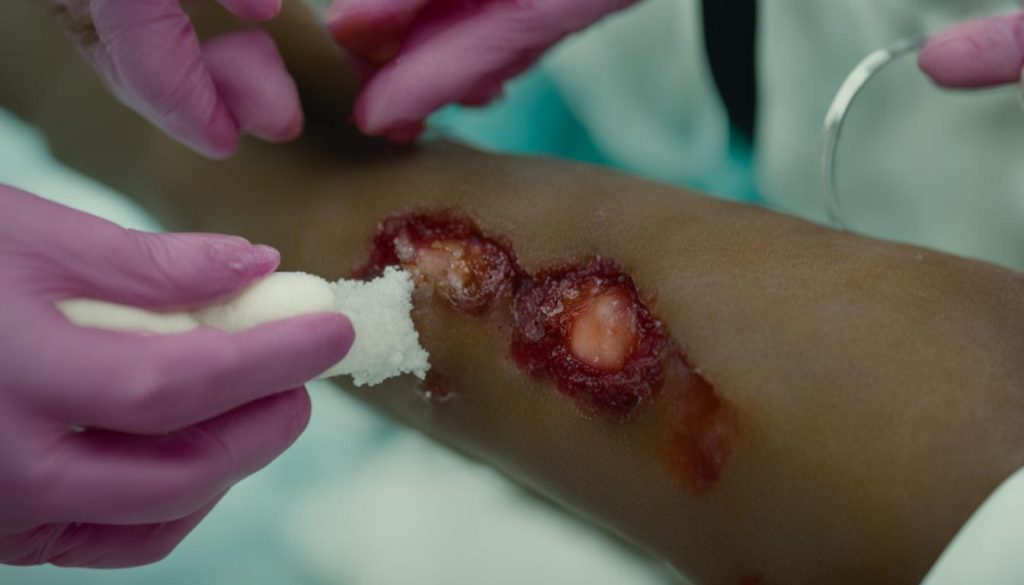
| Signs that Require Medical Attention | Actions to Take |
|---|---|
| Wound does not stop bleeding | Apply gentle pressure, and if bleeding persists, seek medical attention |
| Wound is deep or large | Seek medical attention immediately |
| Wound has dirt or foreign objects embedded | Do not attempt to remove objects; seek medical attention |
| Wound becomes increasingly painful | Seek medical attention if pain continues to worsen |
| Signs of infection (redness, swelling, or pus) | Seek medical attention for appropriate treatment |
| Wound caused by an animal bite | Seek medical attention to prevent infection or complications |
How to Clean a Wound Effectively?
Proper wound cleansing is essential to prevent infections and promote healing. Follow these steps to clean a wound effectively:
- Wash and dry your hands thoroughly before touching the wound to prevent introducing any additional bacteria.
- Rinse the wound under cool, running tap water to remove dirt, debris, and bacteria. Hold the wound under the water for 5 to 10 minutes, ensuring a thorough cleanse.
- If available, use Elastoplast wound spray to clean the wound. Spray directly onto the wound, keeping the nozzle at a distance of approximately 5-10cm for better coverage. The Elastoplast wound spray is specially formulated to disinfect the wound without harming the surrounding skin or living tissue.
- Gently pat dry the wound and the surrounding skin area using a clean towel or tissue. Be careful not to rub the wound as it may cause further damage or delay the healing process.
- Apply a suitable dressing such as Elastoplast plaster or a sterile dressing to protect the wound from outside contaminants. Ensure that the dressing covers the entire wound and adheres securely to the skin.
Proper wound cleansing is particularly important for chronic wounds, which are at a higher risk of infection. By following this step-by-step guide and using products like Elastoplast wound spray, you can effectively clean and disinfect cuts and wounds, reducing the risk of infections and promoting quicker healing.
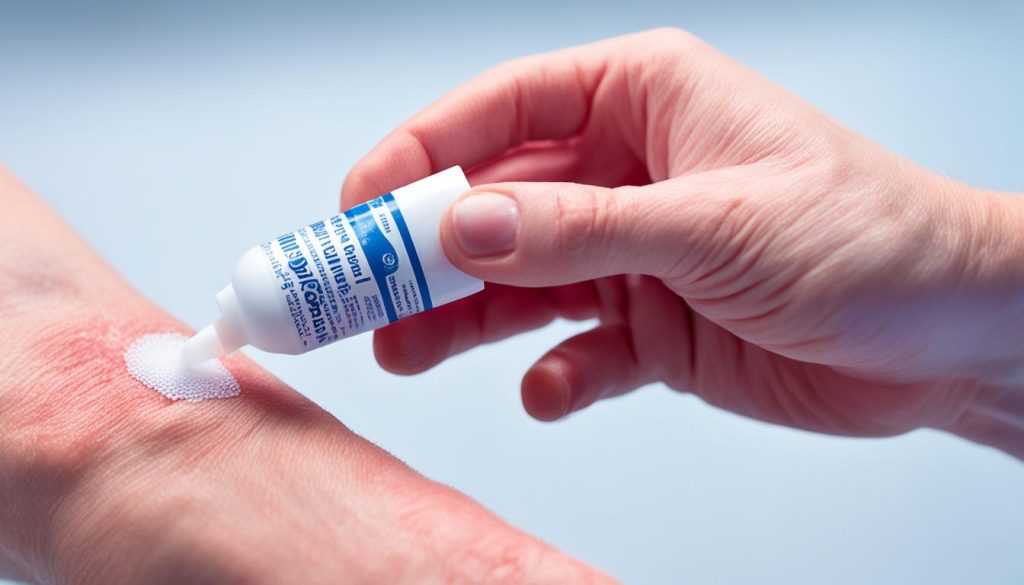
Why Use Elastoplast Wound Spray?
Elastoplast wound spray offers a convenient and effective solution for wound cleansing. Its unique formulation helps reduce the risk of infections without causing harm to living skin cells. The spray evenly covers the wound surface, providing thorough disinfection and promoting a clean healing environment.
How to Disinfect a Cut with Elastoplast Wound Spray?
In order to effectively disinfect a cut, it is important to use the right wound cleansing solutions. One such solution is Elastoplast wound spray, which is not only skin-friendly but also effective in protecting living skin cells while reducing microorganisms. Unlike rubbing alcohol, which can harm human tissue, Elastoplast wound spray provides a gentle and skin-friendly approach to wound cleaning.
The key ingredient in Elastoplast wound spray is polihexanide, a powerful antiseptic agent that helps reduce the number of microorganisms on the wound. This helps to prevent infections and promote healing. The spray is specially formulated to be gentle on the skin, ensuring it does not cause any harm to living skin cells.
When using Elastoplast wound spray to disinfect a cut, simply follow these steps:
- Wash your hands thoroughly with soap and water.
- Clean the wound by rinsing it gently with water to remove any dirt or debris.
- Shake the Elastoplast wound spray bottle well and hold it about 5-10cm away from the wound.
- Spray directly onto the wound, making sure to cover the entire area.
- Allow the spray to dry naturally.
After disinfecting the cut with Elastoplast wound spray, you can apply a suitable dressing or plaster to protect the wound from further contamination. Remember to always seek medical attention if the wound is deep, does not stop bleeding, or shows signs of infection such as redness, swelling, or pus.
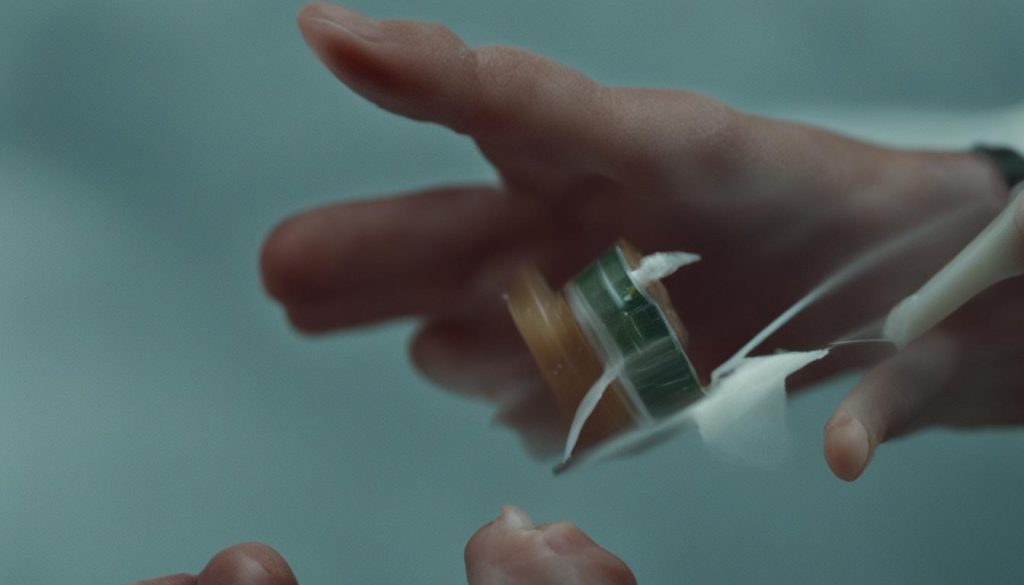
Conclusion
Proper wound care is essential for preventing infections and promoting healing. By following the guidelines for wound cleansing and dressing, you can ensure that wounds are effectively cleaned and receive the necessary care for faster recovery.
If a wound does not improve or shows signs of infection such as redness, swelling, or pus, it is important to seek medical attention. Professional assistance can provide the necessary treatment to prevent further complications and aid in the healing process.
Remember, effective wound care involves thorough cleansing, proper dressing, and seeking appropriate medical attention when needed. By following these steps, you can prioritize your health and well-being while ensuring that wounds receive the care they require.
FAQ
How do I clean a wound effectively?
To clean a wound effectively, wash and dry your hands thoroughly, rinse the wound under running tap water for 5 to 10 minutes, gently dab or wipe the skin with a saline solution or alcohol-free wipe, pat dry the area using a clean towel or tissue, and apply a sterile dressing.
Why is proper wound care important?
Proper wound care is important to prevent infection and promote faster healing. It involves washing and drying hands thoroughly, rinsing the wound under running tap water, applying gentle pressure to stop bleeding, and adding another dressing if necessary. Seek medical attention for wounds that do not stop bleeding, are deep or large, have dirt or something embedded in them, are very painful, become red and swollen or have pus coming out, or were caused by a bite.
What is the step-by-step guide to cleaning a wound?
The step-by-step guide to cleaning a wound is as follows: wash and dry hands thoroughly, rinse the wound under running tap water, clean the wound with Elastoplast wound spray, pat dry the wound and surrounding skin area, and apply a plaster or sterile dressing.
How do I disinfect a cut with Elastoplast wound spray?
Disinfecting a cut can be done using Elastoplast wound spray, which is a skin-friendly option for wound cleansing. It uses polihexanide to reduce the number of microorganisms without harm to human tissue. Rubbing alcohol is not recommended as it can burn and harm living skin cells. Elastoplast wound spray is a suitable and effective alternative.
What is the importance of proper wound care?
Proper wound care, including thorough cleansing and dressing, is crucial to prevent infection and promote healing. If a wound does not improve or shows signs of infection, it is important to seek medical attention. By following these guidelines, you can ensure that wounds are cleaned effectively and foster a faster healing process.


